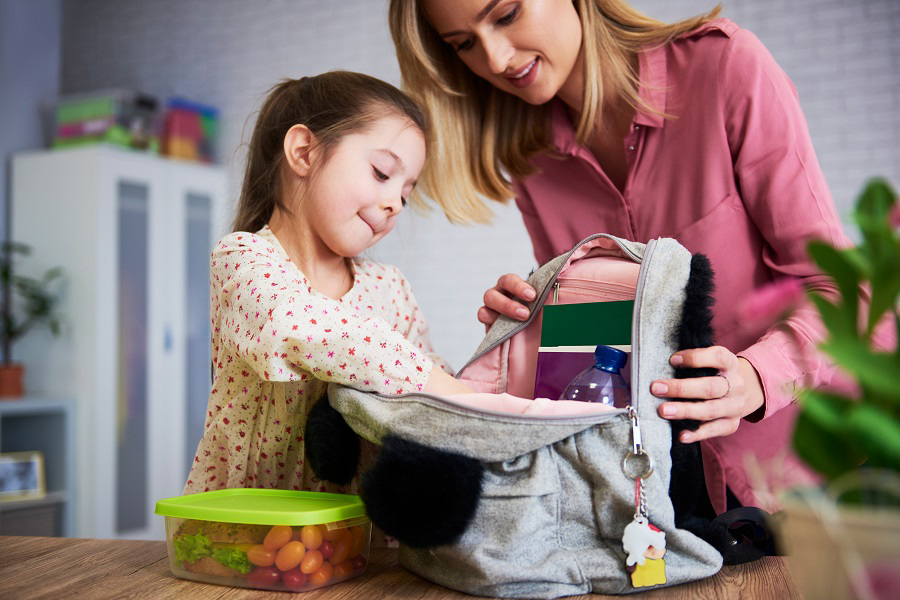How Much Stuff Is in That School Backpack?

A child can literally “bend over” from the weight of a backpack. When a child wears a heavy backpack, the weight of the pack can pull them backward. To compensate, the child may bend forward at the hips or arch the back, which can cause the spine to compress unnaturally. Some children may also develop neck and shoulder pain or problems with posture.
Style is not the name of the game when it comes to your child’s backpack, but rather sensibility. Your child might favor the sling-style backpack because “all the other kids have one,” but this one-strap pack puts all the pressure on one shoulder, which pulls that shoulder down causing back, neck, and shoulder pain. When the weight of the entire backpack is on only one side of the body, the child will often end up leaning to one side to offset the extra weight. A backpack with two straps splits the weight of the pack’s contents across the shoulders making it a better choice.
Even practical backpacks, such as the traditional two-strap kind, can strain your child’s joints and muscles and may cause back pain if they are too heavy or are used incorrectly.
How to Select a School Backpack
The below tips will help you choose a backpack.
- Use a lightweight canvas pack. Leather packs are heavier adding more weight to what your child is already carrying.
- Two wide, padded shoulder straps share the weight of the contents. Backpacks with tight, narrow straps can dig into the shoulders and interfere with circulation and nerves.
- A padded back provides comfort but also protects your child from being poked by items (i.e., scissors).
- A waist belt distributes weight more evenly across the body.
- Multiple compartments help distribute the weight more evenly.
You may also consider buying a pack on wheels (similar to a small luggage bag), but if your child must pull the pack upstairs or roll it through snow, they could risk straining their back.
Best Backpack Safety Tips
Once you have selected the right backpack for your child, these tips will help your child use it properly:
- Lighten the load. Your child’s backpack should be no more than 15% of their body weight. So, a child weighing 100 pounds should carry a backpack no heavier than 15 pounds. Under no circumstances should a child's or adult's backpack weigh over 25 pounds.
- Wear the backpack properly. Your child should use both shoulder straps to ensure that the weight of the pack is evenly distributed. The straps should be tight enough to allow the backpack to fit closely to the body and sit two inches above the waist.
- Adjust the backpack straps so that it doesn't bounce or hang too low on the body. Teach your child how to adjust these on their own.
- Pick the backpack up properly. Your child should bend at the knees and grab the pack with both hands when lifting it to the shoulders to avoid back injuries.
- Use all of the backpack's compartments, putting heavier items, such as textbooks, closest to the center of the back.
It's a good idea to check your child’s backpack for any unnecessary items. Laptops, video games and magazines can really pack on the pounds. Tell your child not to carry their entire day's worth of books in their backpack, but rather make frequent trips to their locker.
If your child is lugging around a hefty backpack every day, it could lead to lifelong problems. Look to see if your child leans forward, backward, or to the side when they wear it, and adjust as necessary.
If your child complains of back pain, or numbness or weakness in the arms or legs, talk to their pediatrician.
School is not meant to be a back-breaking experience. Tell your kids to lighten up and only bring the bare essentials!
Note: The content of this blog is for informational purposes only. It is not intended for use as diagnosis or treatment of a health problem or as a substitute for the professional consultation of a physician or qualified health care provider. If you have specific questions or concerns regarding a health or medical condition, contact your physician or a licensed health care professional.

